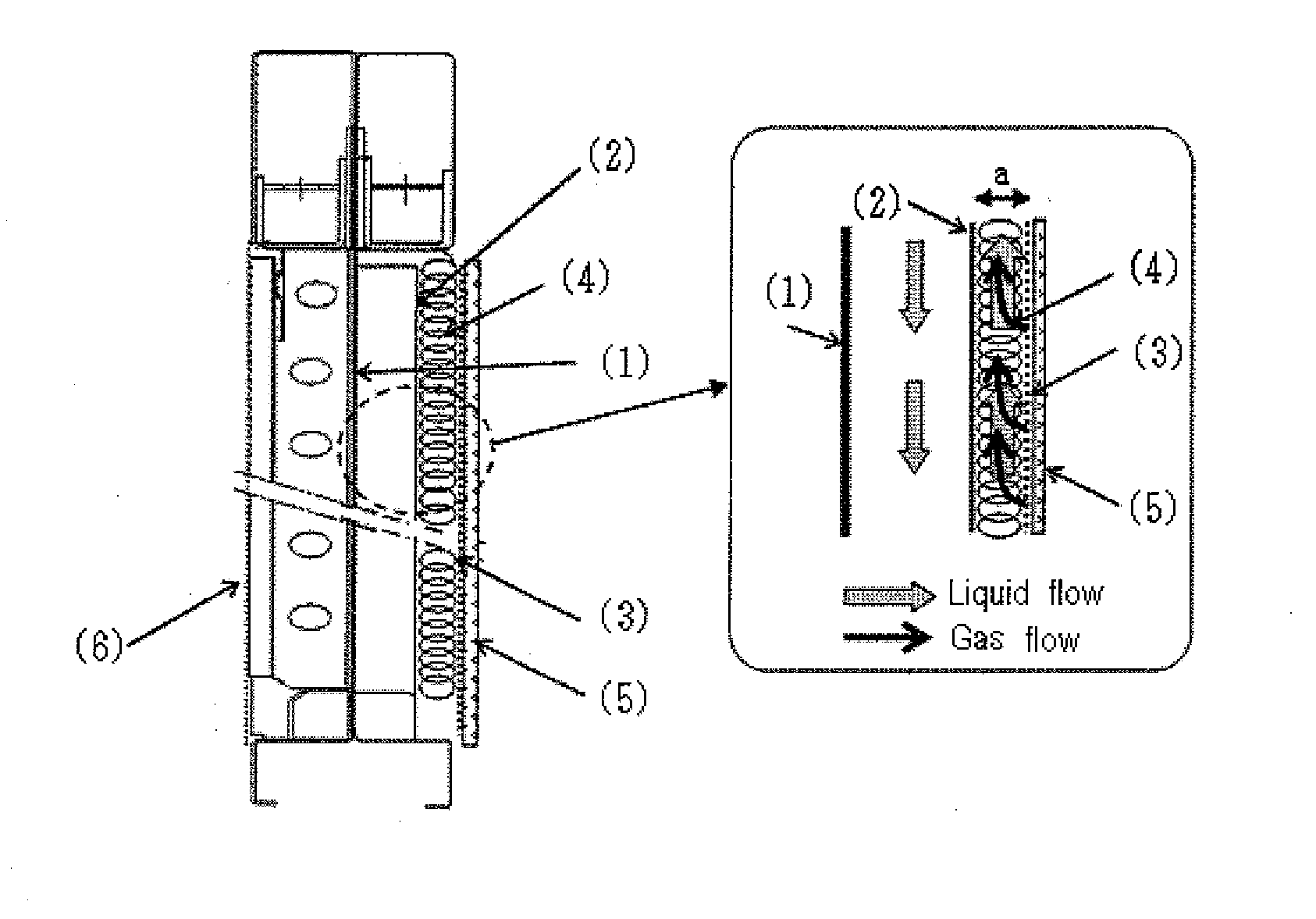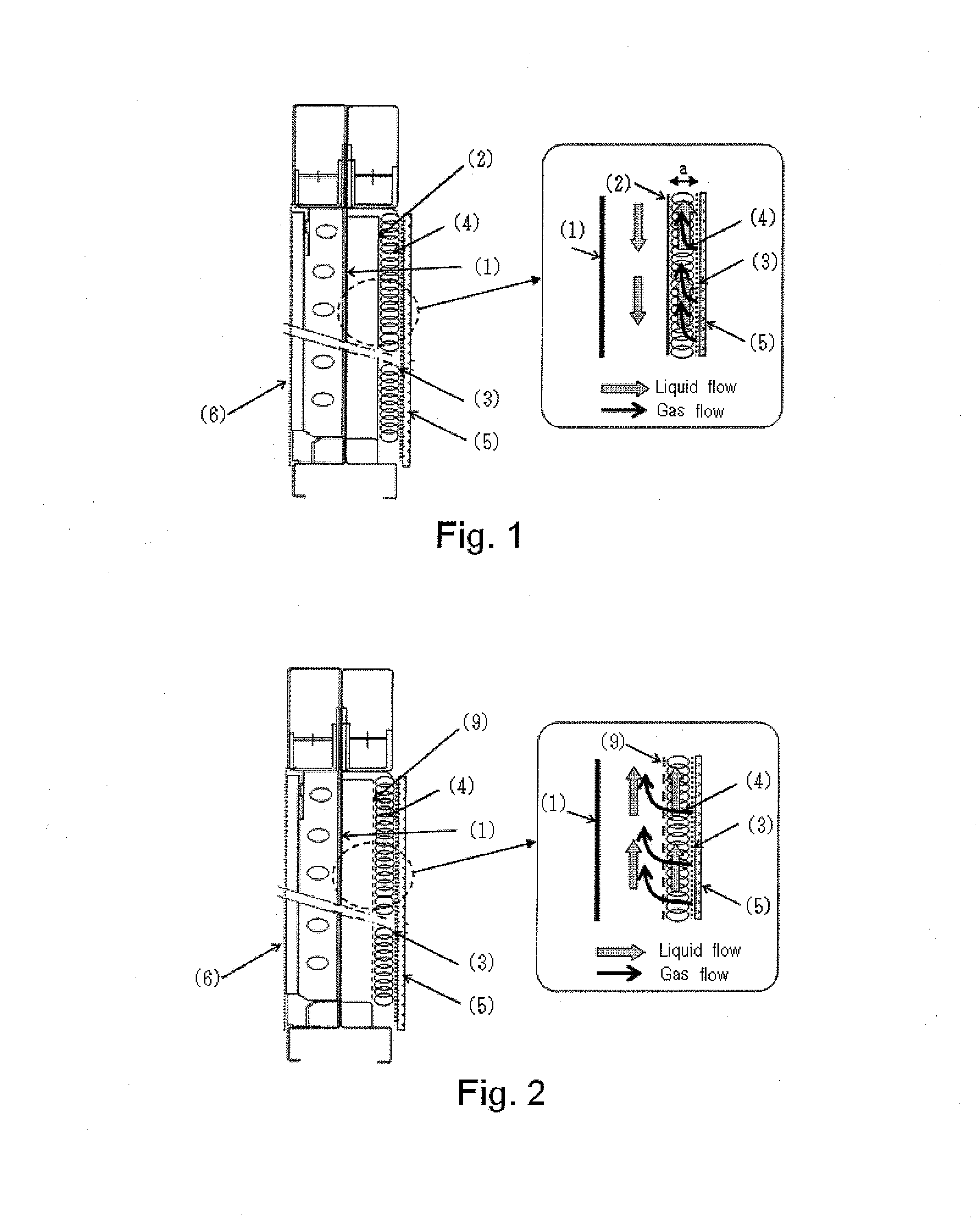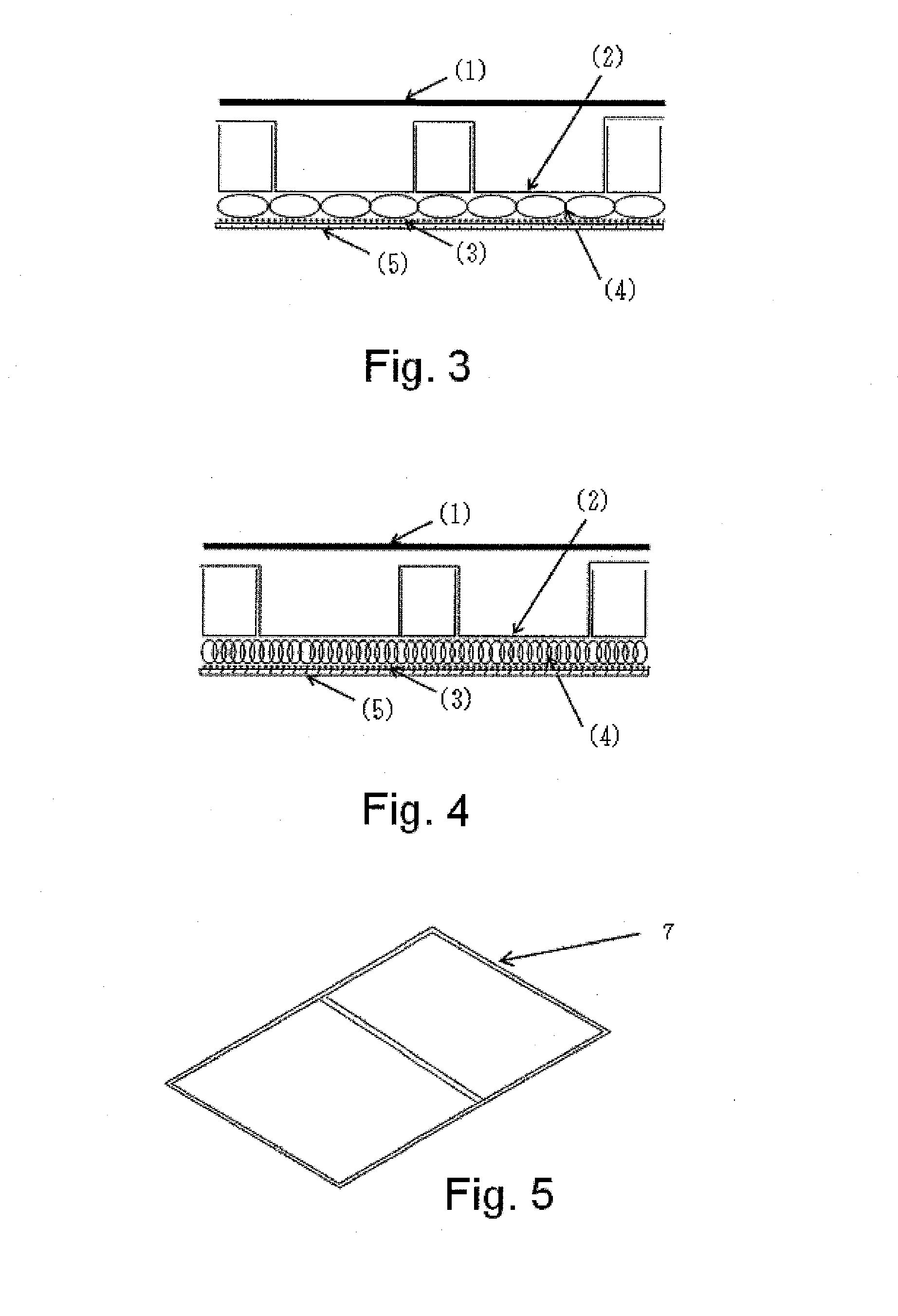Ion exchange membrane method electrolytic cell
a technology electrolysis cell, which is applied in the direction of electrolysis process, electrolysis components, climate sustainability, etc., can solve the problems of increasing the electrolysis voltage, achieve easy adjustment, reduce the electric energy consumption, and avoid the effect of ion exchange membrane breakag
- Summary
- Abstract
- Description
- Claims
- Application Information
AI Technical Summary
Benefits of technology
Problems solved by technology
Method used
Image
Examples
example 1
[0078]An ion exchange membrane method electrolytic cell having a structure as illustrated in FIG. 1 was assembled, wherein a coil cushion (4) was arranged between a non-perforated electrically conductive plate (2) and a cathode (3).
[0079]The coil cushion (4) used was made as follows. A metal frame (7) having a structure as illustrated in FIG. 5 was made from a nickel wire rod having a diameter of 1.2 mm. A metal coil having a coil diameter of 8.5 mm and comprised of a nickel wire having a diameter of 0.1 mm was made by a roll press. The metal coil (8) was wound around the metal frame (7) as illustrated in FIG. 6 at a winding number of 60 times per dm2. A coil cushion (4) was made from the metal coil (8) wound around the metal frame (7) as illustrated in FIG. 7. The coil cushion (4) was arranged between the non-perforated electrically conductive plate (2) and the cathode (3) as illustrated in FIG. 1.
[0080]The coil cushion (4) had a coil density of 3.0 g / dm2, and a coil thickness of 2...
example 2
[0089]By the same procedures and conditions as mentioned in Example 1, an ion exchange membrane method electrolytic cell apparatus having the same structure as mentioned in Example 1 was assembled and electrolysis of sodium chloride was conducted. An electrode coated with a platinum-nickel catalyst used as the cathode was prepared from an expanded metal substrate made of nickel having a length of 1400 mm in the short way direction and a length of 1200 mm in the long way direction. The expanded metal substrate was comprised of nickel strands having a strand width (width of cut) of 1.0 mm, a strand thickness (metal plate thickness) of 1.0 mm, and had a short way of 4.0 mm, a long way of 8.0 mm, and a percent open area of 46%. Other procedures and conditions remained the same.
[0090]The electrolysis voltage was measured. The electrolysis voltage was maintained at approximately 3.05 V, thus, 0.05 V higher than that as measured in Example 1.
PUM
| Property | Measurement | Unit |
|---|---|---|
| contact pressure | aaaaa | aaaaa |
| thickness | aaaaa | aaaaa |
| thickness | aaaaa | aaaaa |
Abstract
Description
Claims
Application Information
 Login to View More
Login to View More - R&D
- Intellectual Property
- Life Sciences
- Materials
- Tech Scout
- Unparalleled Data Quality
- Higher Quality Content
- 60% Fewer Hallucinations
Browse by: Latest US Patents, China's latest patents, Technical Efficacy Thesaurus, Application Domain, Technology Topic, Popular Technical Reports.
© 2025 PatSnap. All rights reserved.Legal|Privacy policy|Modern Slavery Act Transparency Statement|Sitemap|About US| Contact US: help@patsnap.com



